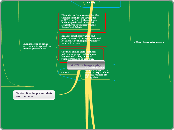iGCSE Geography
Section A — The natural environment and people
2. Coastal environments
3. Hazardous environments
Some places are more
hazardous than others.
Different types of hazard (climatic, tectonic, etc).
The global distributions, causes and characteristics of tropical
revolving storms, volcanic and earthquake activity (plate
movements).
Measuring and recording weather conditions, eg strong winds,
intense rainfall.
FIELDWORK
Collecting and recording
weather data
Hazards have an impact
on people and the
environment.
Different levels of
economic development
affect how people cope
with hazards.
Managing hazards (tropical storms, volcanic eruptions and
earthquakes) involves taking actions both before and after the event.
Predicting and preparing for hazards (education, early warning
systems, shelters).
Responding to hazards: short-term (emergency aid and disaster
relief); long-term (risk assessment, adjustment, improving
prediction).
CASE STUDIES
Case studies of the
management of one
tropical storm and one
tectonic event. One of
these should have
happened in an LIC
and the other in an
HIC.
TECTONIC + LIC = PINATUBO
LONGER TERM
TROPICAL STORM + HIC = KATRINA
FIELDWORK
Surveying peoples’
views on the
management of a hazard
event
REVISION
CASE STUDIES
FIELDWORK
Section B — People and their environments
4. Economic activity and energy
6. Urban environments
A growing percentage of
the world’s population
lives in urban areas.
The nature of urbanisation (including suburbanisation and counterurbanisation); the factors affecting the rate of urbanisation and the
emergence of mega-cities.
The problems associated with rapid urbanisation including
congestion, transport, employment, crime and environmental
quality.
FIELDWORK
Environmental quality
survey
The urban environment is
characterised by the
segregation of different
land uses and of people
of different economic
status and ethnic
background.
Factors encouraging similar land uses to concentrate in particular
parts of the urban area (eg locational needs, accessibility, land
values).
Reasons for, and consequences of, the segregation of different socioeconomic and ethnic groups.
Shanty towns (squatter communities): location, growth, problems
and mitigating strategies (including self-help).
FIELDWORK
Land use transects
plotting
CASE STUDIES
A case study of one
city to show the land
use patterns and the
distribution of
social/ethnic groups.
A case study of shanty
town management in a
LIC city.
Changes occur as urban
environments age and the
needs of people change.
The nature of, and reasons for, the changes taking place at the edge
of HIC cities (eg retail complexes, business parks and industrial
estates). The ‘greenfield’ versus ‘brownfield’ debate.
Areas of social deprivation and poverty in HIC cities: symptoms and
locations. The changing fortunes of inner-city areas.
The roles of managers (planners, politicians, property developers
and industrialists) in urban regeneration and re-imaging.
CASE STUDY
A case study of one
named urban area in
an HIC to explain how
and why changes are
taking place.
Section C — Global issues
Globalisation is making
the nations of the world
increasingly
interdependent. Major
movements of people are
both a cause and a
consequence of this
interdependence.
GLOBALISATION
TOURISM
The growth of global tourism and its causes (increased leisure, the
package holiday, modern transport, marketing).
The impact of mass tourism on the environment, economy and
people of destination areas.
Attempts to make tourism more sustainable (eg ecotourism)
CASE STUDIES
A case study of a package holiday destination.
A case study of sustainable tourism (eg Galapagos, Bhutan).
MIGRATION
Migration — a component of population change; international
migration; net migration.
Types of migration (voluntary versus forced); the push-pull factors
affecting migration.
Managing migration — refugee and asylum-seeker issues: the case
for controlling migration flows.
CASE STUDY
A case study of international migration (eg
asylum seekers and economic migrants to UK).
